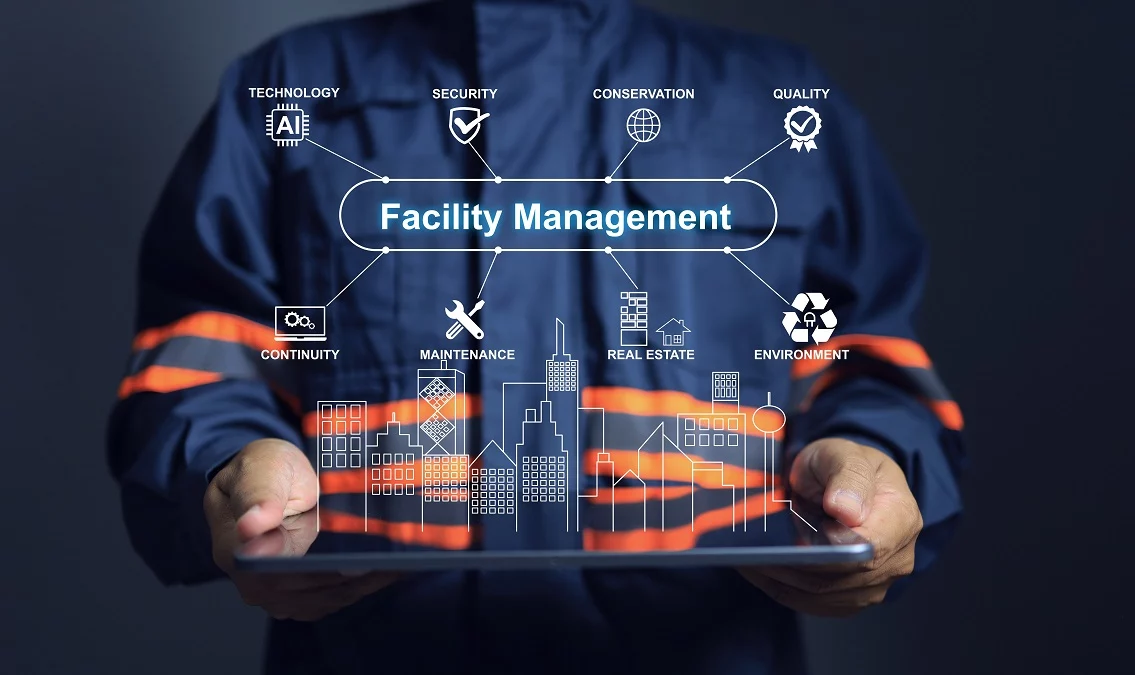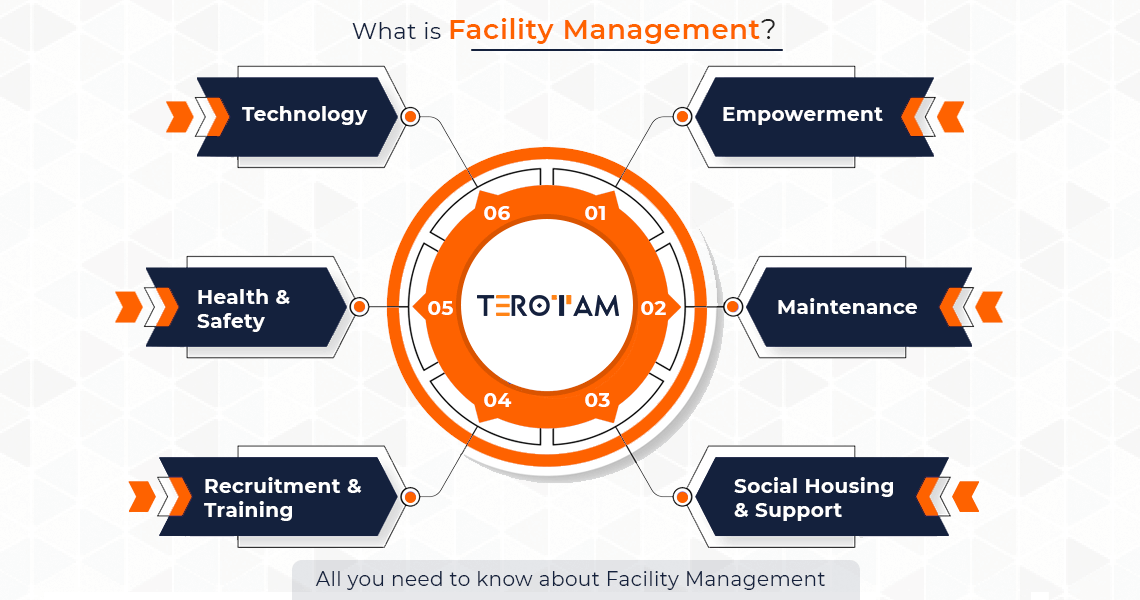Why Facility Management is Important for Asset Long Life
Why Facility Management is Important for Asset Long Life
Blog Article
Key Fads Forming the Future of Center Management in 2024
As we look in advance to 2024, the landscape of facility administration is poised for substantial improvement, driven by numerous crucial patterns. The combination of wise building modern technologies and a change towards data-driven decision-making guarantee to improve functional performance while focusing on sustainability in method.
Smart Building Technologies

Smart building technologies encompass a vast range of systems, including intelligent lighting, a/c controls, and security systems. By incorporating these systems, facility supervisors can keep track of and adjust criteria in real-time, bring about considerable decreases in power waste and functional costs. As an example, smart sensors can discover tenancy levels and change lighting and temperature appropriately, making sure that power is just made use of when essential.
Furthermore, these modern technologies help with enhanced information collection, enabling organizations to track usage patterns and recognize chances for more renovations. The implementation of smart building technologies not only adds to sustainability goals yet likewise develops much healthier work environments that can enhance worker performance and contentment.
As we relocate right into 2024, the adoption of wise structure technologies will likely increase, showing a broader shift in the direction of more intelligent, responsive, and sustainable center administration methods.
Data-Driven Choice Making
Increasingly, companies are leveraging data-driven decision making to enhance facility management techniques. By taking advantage of information analytics, center supervisors can obtain actionable understandings that dramatically boost functional efficiency and resource appropriation. The assimilation of sophisticated technologies, such as IoT sensing units and real-time tracking systems, makes it possible for the collection of substantial quantities of data on structure performance, occupancy rates, and power usage.
This riches of details enables center supervisors to determine patterns, forecast upkeep requirements, and proactively address problems prior to they rise. As an example, anticipating analytics can anticipate equipment failings, minimizing downtime and repair work expenses. In addition, information visualization tools help with far better communication amongst stakeholders, making certain that notified choices are made collaboratively.
Additionally, data-driven techniques boost critical planning by making it possible for facility supervisors to assess the effectiveness of existing methods and make educated selections regarding investments in innovation or infrastructure. As organizations increasingly prioritize functional excellence, data-driven decision making is poised to come to be a foundation of effective facility management techniques in 2024 and beyond. Eventually, the capability to leverage data effectively will empower organizations to develop much more effective, productive, and resilient facilities.
Sustainability and Environment-friendly Practices
The focus on data-driven decision making naturally aligns with the expanding concentrate on sustainability and eco-friendly methods within center monitoring. As organizations progressively focus on environmental obligation, facility supervisors are leveraging analytics to optimize source usage, reduce waste, and minimize carbon footprints. This article tactical approach enables the assimilation of energy-efficient systems, such as LED lighting, wise heating and cooling controls, and renewable energy resources into center procedures.
Moreover, the implementation of lasting practices prolongs past power intake. Center managers are advertising and taking on green materials reusing initiatives to create a circular economy within their centers. This not just improves the ecological profile of the company yet likewise cultivates a society of sustainability amongst employees.
Compliance with ecological regulations is one more vital facet driving the adoption of environment-friendly practices. By utilizing information analytics, facility supervisors can keep an eye on compliance metrics and recognize locations for enhancement, making sure adherence to global and local sustainability standards.
Hybrid Work Models
A considerable shift towards crossbreed job designs is reshaping the landscape of center management in 2024. This standard incorporates remote and in-office work, necessitating a reevaluation of area utilization, source allotment, and worker involvement methods. Organizations are progressively recognizing the significance of versatile work spaces that accommodate varied demands and choices.
Facility supervisors have to adapt by implementing functional office styles that sustain collective efforts while offering areas for concentrated job. This includes the combination of innovation to help with seamless communication and collaboration amongst in-office and remote staff members. Smart structure options, geared up with analytics and sensors, enable real-time tracking of room use, making it possible for organizations to enhance their atmospheres efficiently.
Moreover, crossbreed job designs emphasize the need for reliable facility administration that focuses on worker experience. This includes not only modern technology and room style yet additionally the advancement of policies that advertise a well balanced work-life dynamic. As business browse this transition, the function of facility management comes to be pivotal in developing a dexterous office that cultivates productivity and drives organizational success. Basically, the crossbreed job design is transforming facility monitoring, encouraging an aggressive approach to satisfy the evolving needs of the labor force.
Boosted Passenger Wellness
As companies accept hybrid work designs, a heightened concentrate on occupant health is coming to be important to facility monitoring approaches. Facility Management. This change recognizes that a healthy and balanced and completely satisfied workforce directly affects productivity and retention rates. Center supervisors are currently prioritizing settings that promote mental and physical health, incorporating components such as all-natural lighting, biophilic design, and obtainable wellness sources

Modern technology plays a vital role in this evolution. Smart structure systems can keep click to read more track of environmental elements and change setups in real-time, guaranteeing optimal convenience levels - Facility Management. Furthermore, feedback systems, such as tenancy sensors and staff member studies, enable center managers to continually improve wellness initiatives based on owner needs.

Final Thought
In 2024, the future of center management will certainly be dramatically affected by the combination of clever structure technologies and data-driven decision-making, promoting enhanced operational efficiency. These patterns jointly highlight the progressing landscape of facility management in response to modern challenges and possibilities.
Center managers are taking on environmentally friendly materials and advertising reusing campaigns to develop a circular economy within their facilities.A substantial shift in the direction of crossbreed work designs is improving the landscape of center management in 2024.Additionally, hybrid work versions stress the demand for effective center monitoring that prioritizes employee experience.As companies embrace hybrid work designs, an enhanced emphasis on owner wellness is coming to be important to facility monitoring strategies.In 2024, the future of center administration will be significantly influenced by the combination of clever structure innovations and data-driven decision-making, promoting improved operational effectiveness.
Report this page